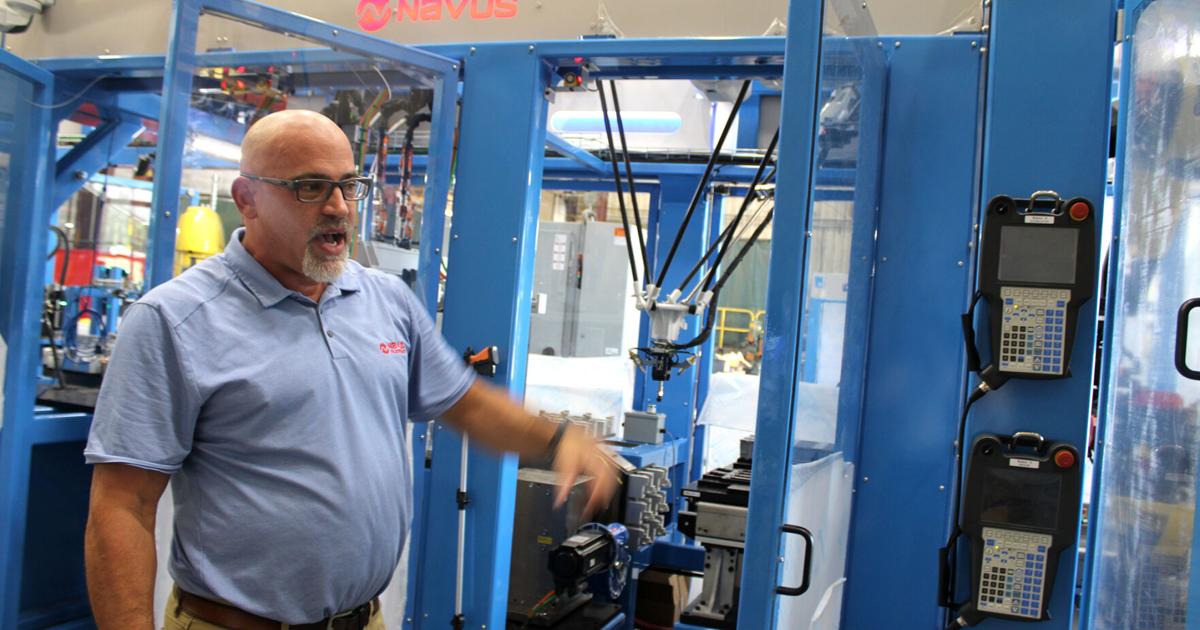The Science Behind Increased Air Turbulence: A Deeper Look At Severity And Frequency

Welcome to your ultimate source for breaking news, trending updates, and in-depth stories from around the world. Whether it's politics, technology, entertainment, sports, or lifestyle, we bring you real-time updates that keep you informed and ahead of the curve.
Our team works tirelessly to ensure you never miss a moment. From the latest developments in global events to the most talked-about topics on social media, our news platform is designed to deliver accurate and timely information, all in one place.
Stay in the know and join thousands of readers who trust us for reliable, up-to-date content. Explore our expertly curated articles and dive deeper into the stories that matter to you. Visit Best Website now and be part of the conversation. Don't miss out on the headlines that shape our world!
Table of Contents
The Science Behind Increased Air Turbulence: A Deeper Look at Severity and Frequency
Air travel, once a relatively smooth experience, is increasingly punctuated by jarring bouts of turbulence. This isn't just passenger anxiety; scientists are observing a concerning trend of increased turbulence severity and frequency, and the reasons are complex and interwoven. This article delves into the scientific understanding behind this phenomenon, exploring the contributing factors and their implications for the future of air travel.
The Growing Problem of Air Turbulence
Reports from pilots and meteorological data consistently point towards a rise in turbulence encounters. This isn't simply anecdotal; studies using advanced atmospheric modeling and flight data analysis confirm a significant increase, particularly in clear-air turbulence (CAT), which is notoriously difficult to predict. This rise poses challenges for passenger safety, flight schedules, and fuel efficiency.
What's Causing the Increase?
Several factors contribute to the observed increase in turbulence:
-
Climate Change: This is arguably the most significant factor. A warming climate leads to stronger jet streams – fast-flowing, narrow air currents high in the atmosphere. These intensified jet streams create greater wind shear, a primary driver of turbulence. The increased temperature gradient between the troposphere and stratosphere also contributes to more unstable atmospheric conditions.
-
Improved Detection Technology: While seemingly contradictory, improved weather forecasting and turbulence detection technology also contributes to the perception of increased turbulence. Better radar systems and sophisticated atmospheric models allow for the detection of previously undetectable turbulence events. This doesn't mean there's more turbulence, but rather, we are now detecting more of it.
-
Changes in Atmospheric Waves: Atmospheric waves, large-scale undulations in the atmosphere, are another key player. Changes in their behavior, possibly linked to climate change, can lead to more turbulent conditions. These waves interact with jet streams, further amplifying turbulence.
-
Arctic Amplification: The disproportionately rapid warming of the Arctic region is altering atmospheric circulation patterns, influencing the strength and behavior of jet streams and contributing to increased turbulence.
Types of Turbulence and Their Severity
Understanding the different types of turbulence helps clarify the issue:
-
Convective Turbulence: This type of turbulence is associated with thunderstorms and rising warm air. It's often visible and easier to predict.
-
Clear-Air Turbulence (CAT): CAT is invisible and unpredictable, making it particularly hazardous. It occurs in areas with minimal cloud cover and is strongly linked to jet stream activity and wind shear. This is the type seeing the most significant increase.
-
Wake Turbulence: This is generated by the wingtip vortices of large aircraft and affects following aircraft, particularly during takeoff and landing. While not directly related to climate change, increased air traffic could indirectly lead to more wake turbulence encounters.
The Future of Air Travel and Turbulence Mitigation
Addressing the growing challenge of air turbulence requires a multi-pronged approach:
-
Advanced Forecasting Models: Investing in more accurate and sophisticated weather forecasting models is crucial for providing pilots with timely and precise turbulence alerts.
-
Improved Aircraft Design: Future aircraft designs might incorporate features to better withstand turbulence, enhancing passenger safety and comfort.
-
Pilot Training and Procedures: Ongoing pilot training and the development of optimized flight procedures can help pilots navigate turbulent conditions more effectively.
-
Further Research: Continued scientific research is vital to better understand the complex interplay of factors driving the observed increase in turbulence and to develop more effective mitigation strategies.
Conclusion:
The increase in air turbulence is a serious concern with far-reaching implications for aviation safety and efficiency. While improved detection plays a role, the overwhelming scientific evidence points towards a strong connection with climate change and its impact on atmospheric dynamics. Addressing this challenge requires a collaborative effort involving meteorologists, aviation professionals, and researchers dedicated to enhancing our understanding and mitigation strategies. The future of safer and smoother air travel depends on it.

Thank you for visiting our website, your trusted source for the latest updates and in-depth coverage on The Science Behind Increased Air Turbulence: A Deeper Look At Severity And Frequency. We're committed to keeping you informed with timely and accurate information to meet your curiosity and needs.
If you have any questions, suggestions, or feedback, we'd love to hear from you. Your insights are valuable to us and help us improve to serve you better. Feel free to reach out through our contact page.
Don't forget to bookmark our website and check back regularly for the latest headlines and trending topics. See you next time, and thank you for being part of our growing community!
Featured Posts
-
 Small Businesses In Manufacturing New Sba Advocate Promises Aid
Aug 01, 2025
Small Businesses In Manufacturing New Sba Advocate Promises Aid
Aug 01, 2025 -
 Unsolved Case Could Missing Brady Memoir Lead To Burial Site Discovery
Aug 01, 2025
Unsolved Case Could Missing Brady Memoir Lead To Burial Site Discovery
Aug 01, 2025 -
 Bitcoin Demand Dips Us Investor Sentiment And Price Predictions
Aug 01, 2025
Bitcoin Demand Dips Us Investor Sentiment And Price Predictions
Aug 01, 2025 -
 Trump Tariffs And The American Economy Winners And Losers
Aug 01, 2025
Trump Tariffs And The American Economy Winners And Losers
Aug 01, 2025 -
 Lengthy Nhs Wait Times Force Man To Forgo Vital Medication
Aug 01, 2025
Lengthy Nhs Wait Times Force Man To Forgo Vital Medication
Aug 01, 2025
Latest Posts
-
 Brazilian Government Actions Potential Threats To Us National Interests
Aug 01, 2025
Brazilian Government Actions Potential Threats To Us National Interests
Aug 01, 2025 -
 Oyster Bay Womans 30 Million Fraud Scheme A Guilty Plea And Political Connections
Aug 01, 2025
Oyster Bay Womans 30 Million Fraud Scheme A Guilty Plea And Political Connections
Aug 01, 2025 -
 Cnn Politics Examining The Maga Medias Rally Around Trump On Epstein Allegations
Aug 01, 2025
Cnn Politics Examining The Maga Medias Rally Around Trump On Epstein Allegations
Aug 01, 2025 -
 Market Movers Apples Earnings Surprise Amazons Stock Slip Reddits Rally
Aug 01, 2025
Market Movers Apples Earnings Surprise Amazons Stock Slip Reddits Rally
Aug 01, 2025 -
 Pop Cap Reimagines Plants Vs Zombies Replanted As Franchise Cornerstone
Aug 01, 2025
Pop Cap Reimagines Plants Vs Zombies Replanted As Franchise Cornerstone
Aug 01, 2025
